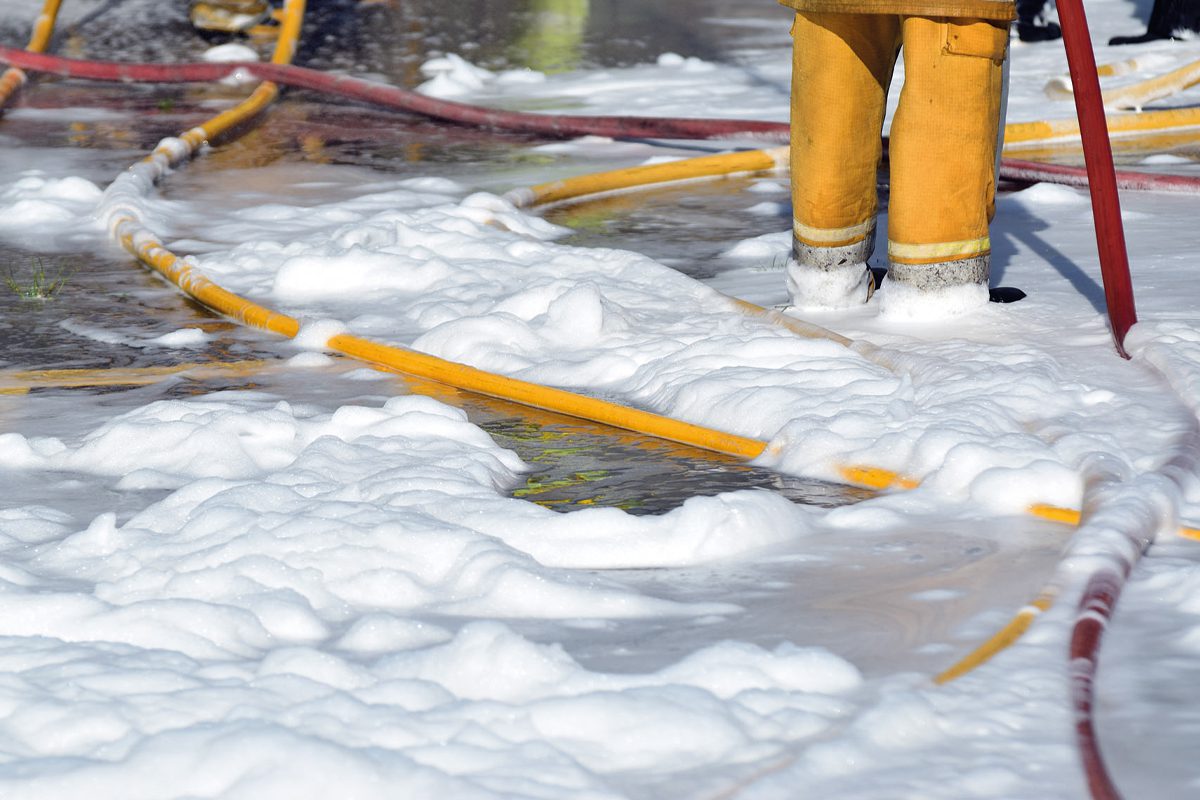
Perfluoroalkyl and polyfluoroalkyl substances – known as PFAS – can be captured and destroyed in water bodies using a system demonstrated by a group at the University of Illinois at Urbana-Champaign.
PFAS substances are highly persistent in the environment, making their leakage into waterways a conventionally long-term hazard – something that can happen because of their presence in chemicals such as fire-fighting foams (pictured), and products such as shampoo and non-stick cooking materials like saucepans.
The researchers used a tunable copolymer electrode to attract and capture these molecules. The proof-of-concept study is seemingly the first to show that copolymers can drive electrochemical environmental applications, according to the group.
The results of the study are published in the journal Advanced Functional Materials.
PFAS contamination has been reported to occur in natural bodies of water, soil and drinking water. It tends to be present in low concentrations, which means that systems intended to remove them must have high selectivity. journal Advanced Functional Materials. PFAS contamination has been reported to occur in natural bodies of water, soil and drinking water. It tends to be present in low concentrations, which means that systems intended to remove them must have high selectivity. PFAS are electrically charged, held together by highly stable bonds, and are water-resistant, making them difficult to destroy using traditional waste-disposal methods.
Group leader Xiao Su said they had “found a way to tune a copolymer electrode to attract and adsorb—or capture—PFAS from water”. The process not only removes the PFAS, but also destroys them simultaneously at the other electrode, an elecrochemical process said to be highly energy-efficient.
It was evaluated using samples from municipal wastewater.







